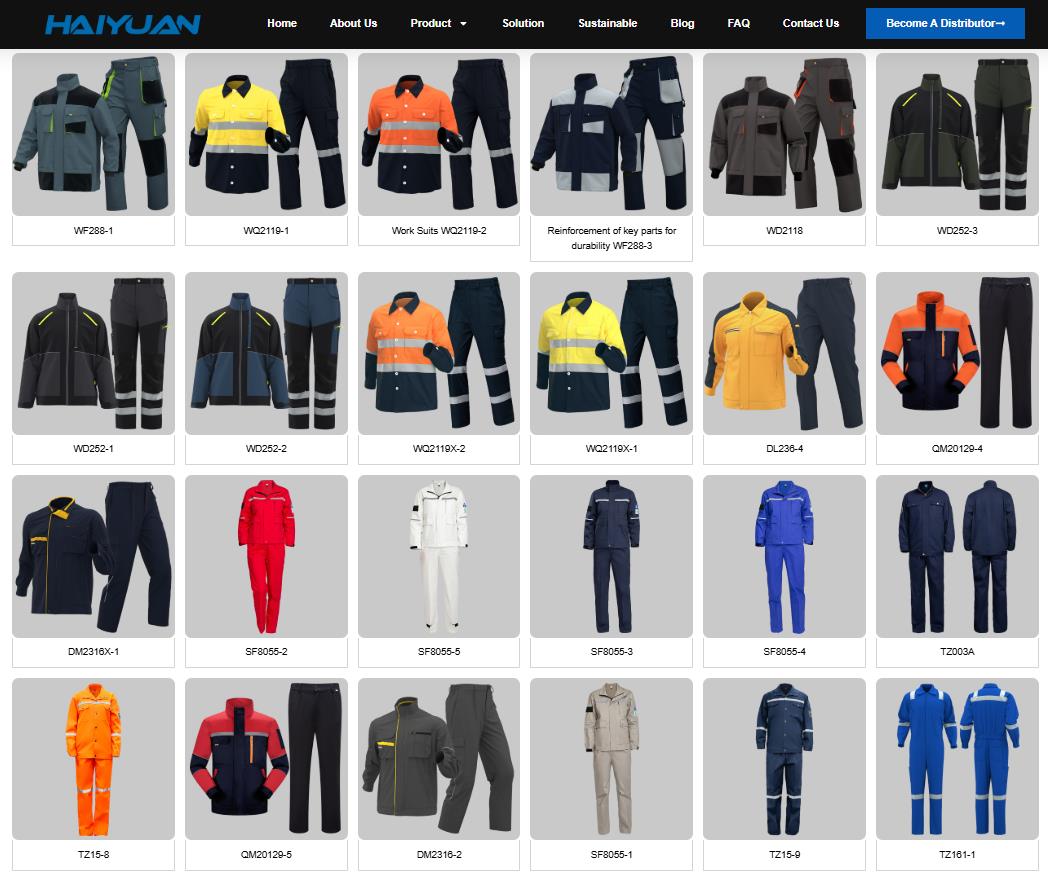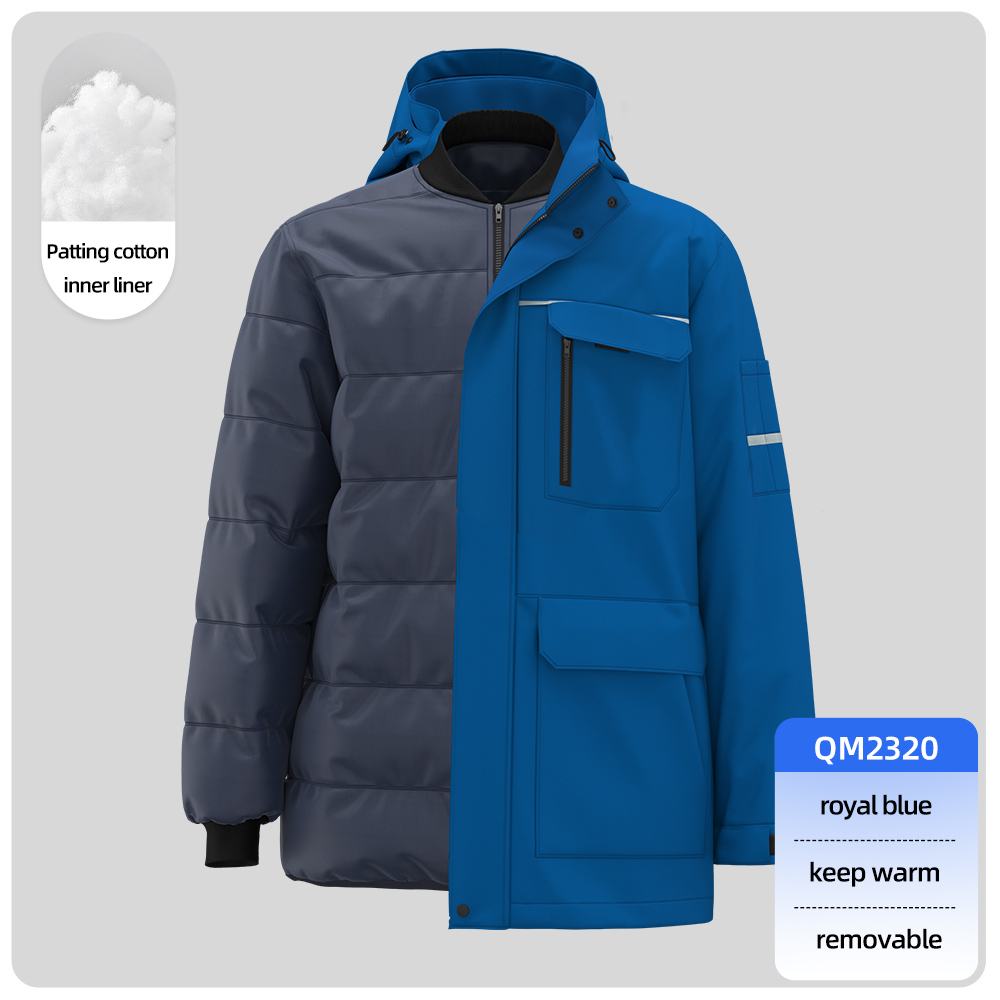Road construction is a specific and high-risk environment, so the work clothes for men in this field are designed for maximum safety, visibility, and durability.
The single most important principle for road construction attire is high visibility. Workers are directly next to active traffic and heavy machinery, so being seen is a matter of life and death.
Here is a head-to-toe breakdown of the typical work clothes for a male road construction worker.
1. Head Protection
-
Hard Hat (Class E or G): Mandatory for protection from falling tools and bumps. For road work, they often need to be rated for electrical protection (Class E) in case of contact with overhead power lines.
-
Bump Cap: For tasks requiring less head impact protection but still needing a form of head covering.
-
Sun/Wide-Brimmed Hat: Worn under the hard hat or alone for shade in very hot, sunny conditions.
-
Winter Liners: Knit caps or fleece liners that fit under the hard hat for cold weather.
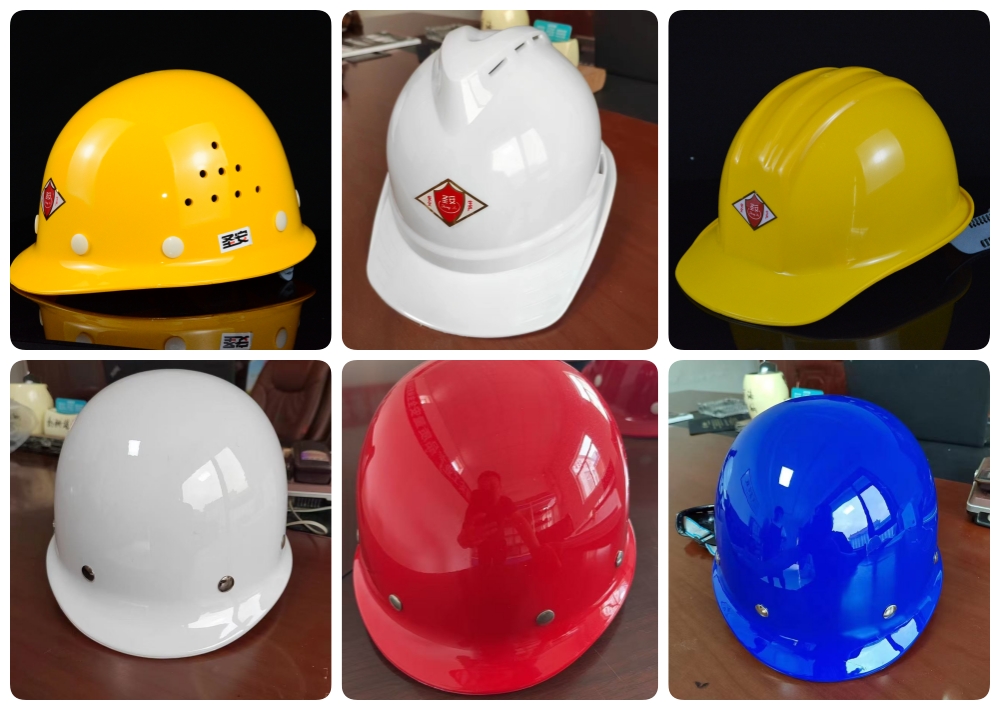
the hard hat
2. Upper Body: High-Visibility is Non-Negotiable
-
ANSI/ISEA Compliance: Garments must meet specific standards (like ANSI/ISEA 107) for visibility. There are three classes:
-
Class 2: High-visibility shirts or vests. Common for general road crew members.
-
Class 3: High-visibility jackets or shirts with sleeves (to create more visible movement). Required for workers in high-risk situations, especially near high-speed traffic. These have reflective material on the arms and torso.
-
-
Common Items:
-
Hi-Vis Vest: The most basic item, worn over a regular shirt.
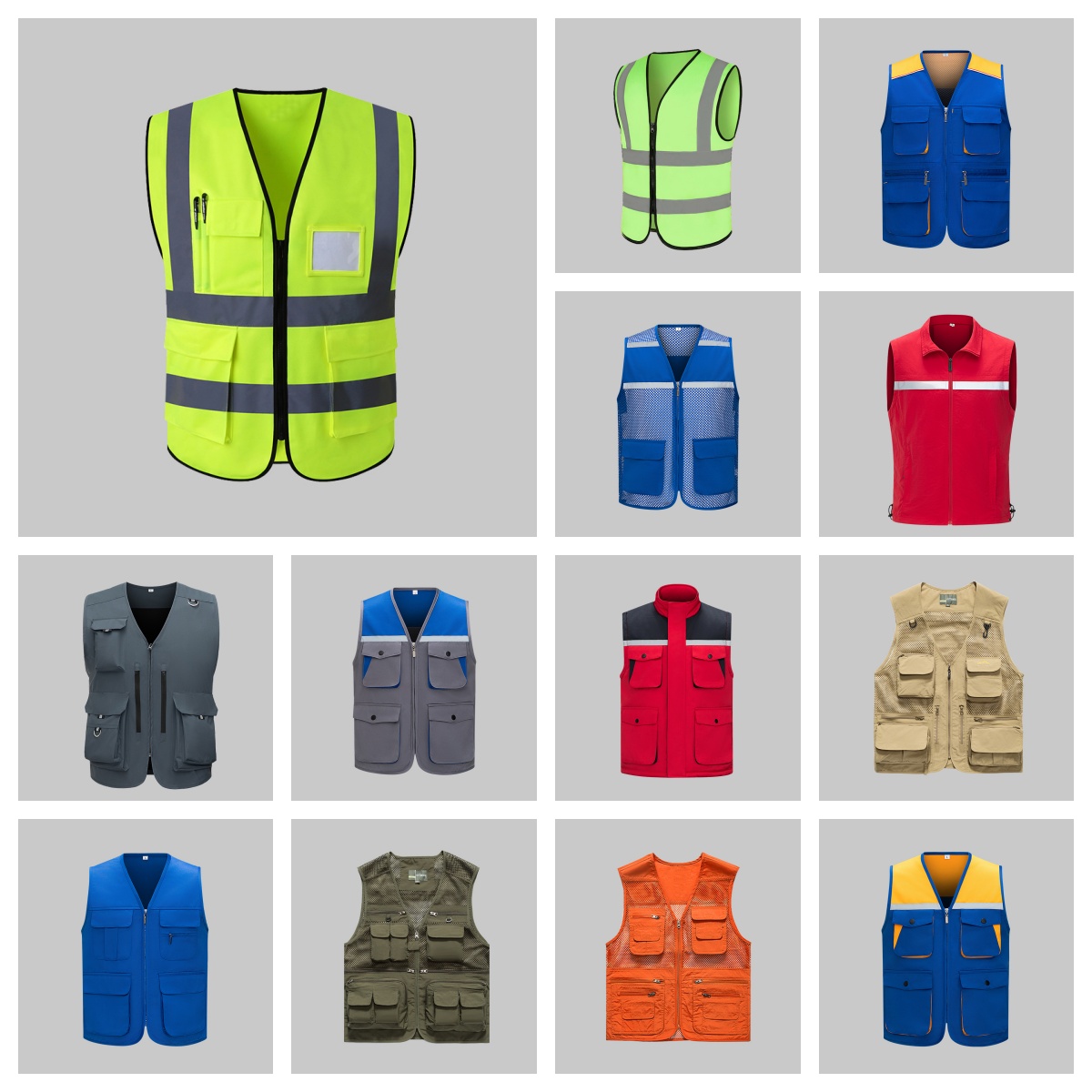
vest waist coat -
Hi-Vis T-Shirt or Long-Sleeve Shirt: Made of breathable, moisture-wicking material for summer.
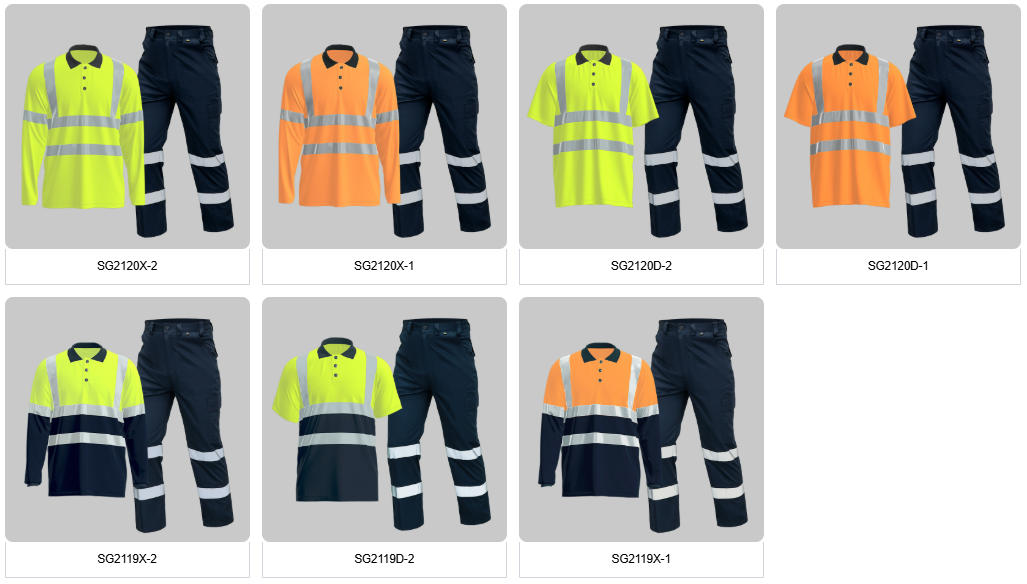
high visibility polo t shirts -
Hi-Vis Rain Jacket: Waterproof and breathable for wet weather.
-
Hi-Vis Insulated Parka/Jacket: Heavily insulated for winter work.
-
3. Lower Body: Pants
-
Material: Extremely durable materials like ripstop cotton, canvas, or duck cloth to resist abrasion from asphalt, kneeling, and general wear-and-tear.
-
Features:
-
Reinforced Knees: Many pants have double-layered knees or pockets for inserting knee pads, which are essential for tasks like laying pipe or pavement.
-
Multiple Pockets: For carrying small tools, nails, and personal items.
-
Color: While hi-vis tops are critical, pants are typically darker colors like khaki, navy, or black to hide dirt, grease, and tar from asphalt.
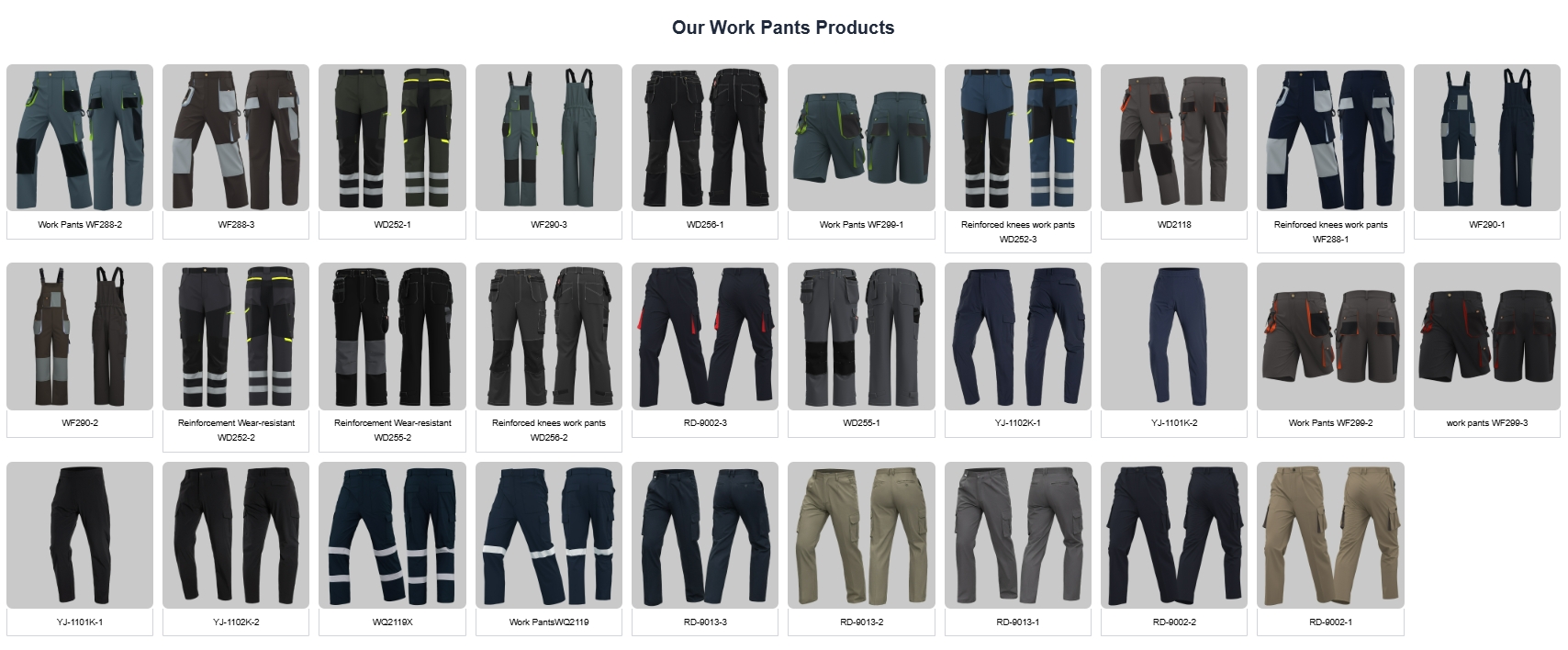
work pants
-
4. Foot Protection: Specialized Boots
Road construction involves hot asphalt, sharp rocks, and heavy materials, so boots are crucial.
-
Safety Toe: Steel, composite, or aluminum toe to protect from crushing.
-
Puncture-Resistant Sole: A plate in the sole to prevent nails or sharp stones from piercing the foot.
-
Waterproof & Insulated: For working in wet conditions or cold weather.
-
Heat-Resistant Soles: Especially important for workers laying asphalt, as the material can be extremely hot.
-
Ankle Support: High-top boots are standard for stability on uneven ground.
5. Hand Protection: Gloves
-
Material: Depends on the task.
-
Leather: For general handling of rough materials, offering abrasion resistance.
-
Impact-Resistant: For operating machinery like jackhammers.
-
Waterproof/Rubber: For working with wet concrete or in the rain.
-
Cut-Resistant: For handling rebar or sharp metal.
-
6. Eye and Hearing Protection
-
Safety Glasses: Mandatory to protect from dust, flying debris, and chemical splashes. Often shaded for sun protection.
-
Hearing Protection (Earmuffs or Earplugs): Essential when operating or working near extremely loud equipment like pavers, rollers, jackhammers, and compressors.
Summary Table: The Road Construction Uniform
| Body Part | Essential Clothing/Item | Key Feature & Purpose |
|---|---|---|
| Head | Hard Hat (+ Sun Hat/Winter Liner) | Impact protection; weather adaptability |
| Upper Body | ANSI-Class 2 or 3 Hi-Vis Shirt/Jacket | Maximum visibility for safety near traffic |
| Hands | Task-Specific Gloves (Leather, etc.) | Abrasion and impact protection |
| Lower Body | Durable Work Pants (Ripstop, Canvas) | Reinforced knees for durability and comfort |
| Feet | Safety-Toe Boots (often heat-resistant) | Puncture protection, ankle support, safety toe |
In short, the male road construction worker’s uniform is a high-visibility armor designed to keep him safe from traffic, the elements, and the physical hazards of the job site. The bright colors and reflective stripes are the most defining characteristic.


